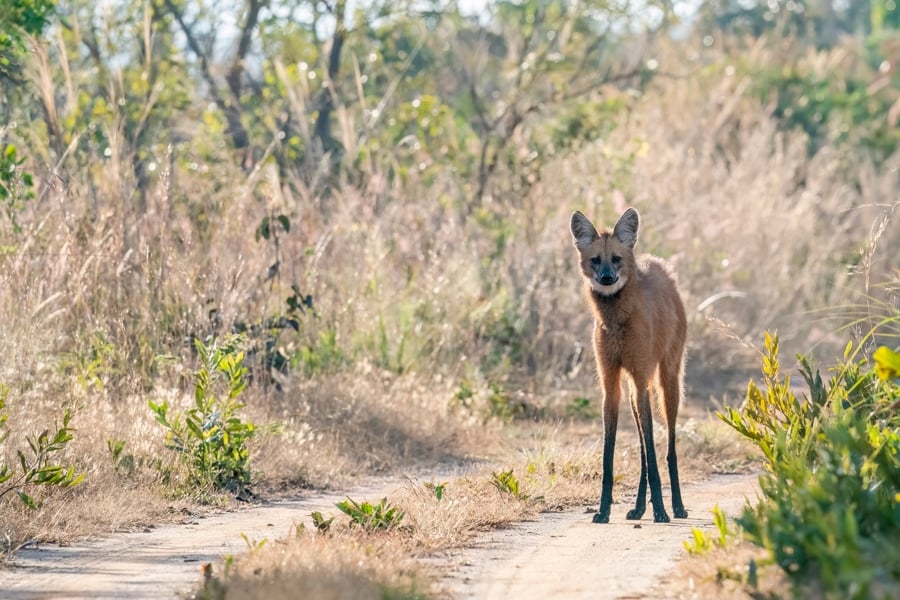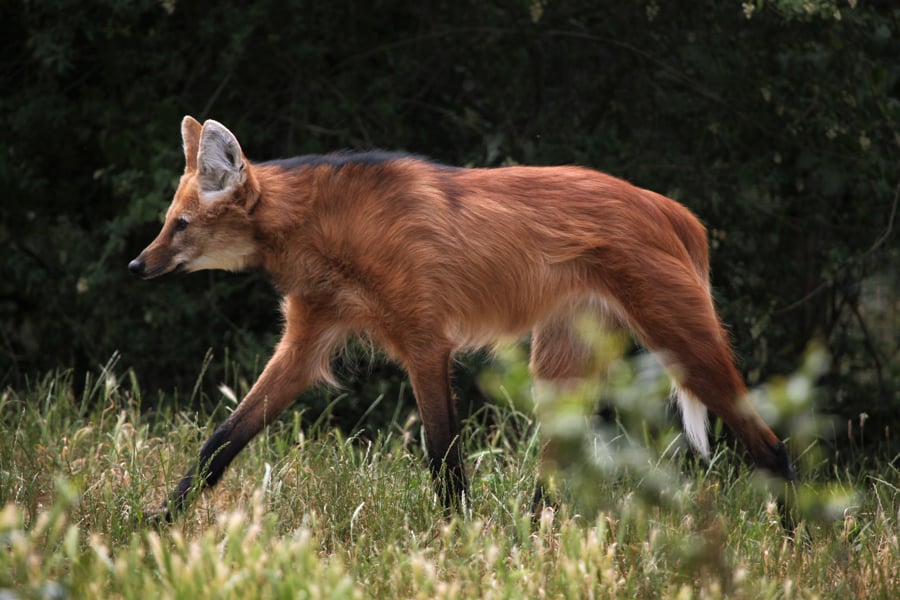
Meet the maned wolf
Blog
The maned wolf is a fascinating animal – not quite a wolf, but not a fox either... learn more about these amazing animals and the threats they are facing.
What is a maned wolf?
Their name implies wolf, but with their pointy faces and rich red-brown coats, they look more like a fox. Yet, they are not closely related to either! The maned wolf (Chrysocyon brachyurus) is a large canine and the only member of the genus Chrysocyon, which means "golden dog". They are named for the beautiful black manes running down their back.
Where do maned wolves live?
The maned wolf is unique to countries in central and eastern South America, including Argentina, Bolivia, Brazil, Paraguay, Peru and possibly Uruguay. They can be found living in many different habitats including grasslands, savannas, forests, swamps, and along rivers.
How tall is a maned wolf?
Thanks to their long black legs, maned wolves reach an impressive 90 centimetres (2.95ft) high at the shoulder. This makes them taller than a grey wolf!
 Photo: Rob Jansen / Shutterstock
Photo: Rob Jansen / Shutterstock
What do maned wolves eat?
Maned wolves are omnivores, eating small mammals, birds and fish, but also vegetables, sugarcane, tubers and fruit!
Fun fact: one of their favourite foods is a tomato-like berry called lobeira, or wolf apple. Scientists believe these fruits play a very important role in helping maned wolves expel life-threatening parasites from their digestive systems.
Maned wolves are nocturnal animals, mainly hunting at night or during dawn and dusk. They use their large and highly sensitive ears, which can rotate, to help them listen intently for their prey.
Maned wolves partner for life 💕
While maned wolves mostly live a solitary life, they do form monogamous bonds with their partner for life. They come together during the breeding season, but then keep their distance for the rest of the year. Although living separately, maned wolf couples communicate with loud calls, often described as ‘roar-barks’. They also communicate with their pungent urine – marking their territory and where they may have buried their prey.
Maned wolves are caring parents
When the female partner is pregnant, the pair will find a den together for the birth. After about 65 days, she gives birth to two–five fluffy, black pups, each weighing only 450g (1lb)! The pups communicate with scratchy, rasping sounds. They nurse for around four weeks and then receive regurgitated food from their mother until they can hunt themselves.
The father plays a crucial role in the first few weeks, protecting the den and bringing food. As the pups grow up and leave the den, both parents will teach them to hunt. They will stay with their parents until they are ready to venture off around one year old.
 Photo: Vladimir Wrangel / Shutterstock
Photo: Vladimir Wrangel / Shutterstock
Maned wolves are fascinating animals that deserve our respect and protection, as all animals do. Stay tuned to learn more about how World Animal Protection is working to protect these amazing animals.